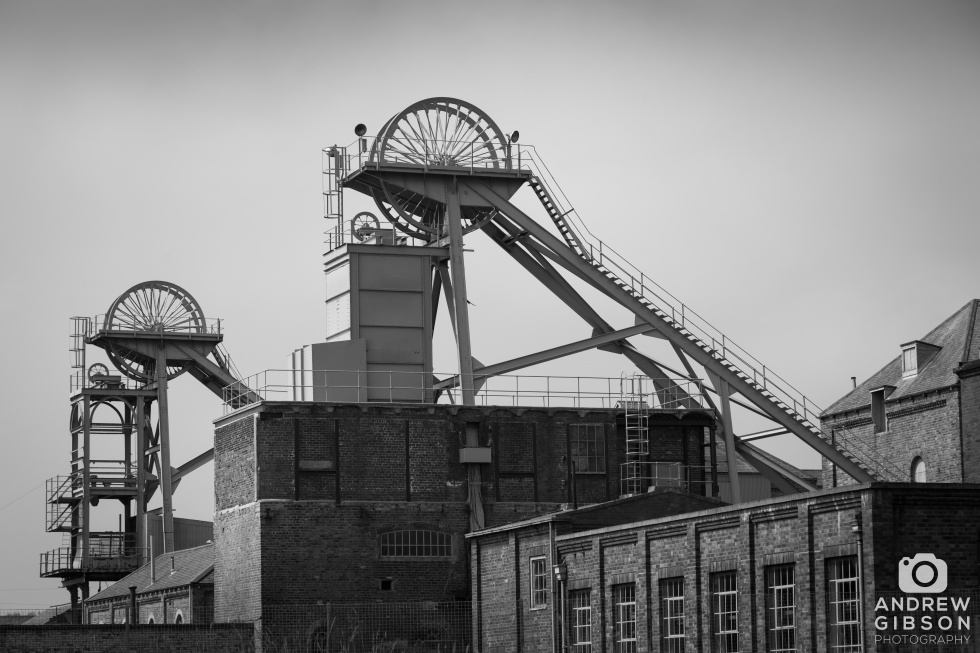There’s something about me that’s instinctively drawn to the past – see endless pictures of cooling towers as a prime example – but since I was in the north east I decided on a leisurely drive up the coast to search out a bit of mining heritage – if anywhere in the UK has something to offer it’s got to be here, right? So armed with an old school AA road map and with the intention of a chilled see-what-we-find outlook on things, I recruited a photographer friend and hit the road in the hazy May sunshine…
Heading north east out of Durham we stopped off at a desolate pub on the A181 that seemingly had enough tables set out to cater for at least a hundred cover lunch. The unabashed optimism flew in the face of the empty car park to the front as we were the first and only customers in there. Always keen to talk to locals about their heritage I asked the kindly old bartender what he knew of the old coal industry and whatever might be left. Initially he seemed rather lost for words – as though it was some great unspoken thing in these parts, or else nobody had taken an interest before. But he soon delved into the recesses of his memory and found the enthusiasm to inform us of all that had been nearby before pointing out various nature reserves in the near vicinity. This wasn’t what we had in mind at all so we enjoyed the pleasantries before carrying on our way. The map was littered with place names such as Blackhall Colliery and Shotton Colliery so surely there would be something of interest… There wasn’t. The colliery towns were all conspicuous by the absence of anything resembling an actual colliery.
Further up the coast we reached Easington Colliery, once dominated by its headstocks but like so many other settlements that grew up on coal, in the post-industrial landscape the place was virtually devoid of any reason for being, an air stillness and uncertainty hanging over the town like a perpetual North Sea mist. But this is mining country I thought to myself – there has to be something left… Well, there’s a memorial garden, and there’s a pit cage planted monolith-like on a mound near to the capped shaft that almost succeeds in hiding the sole purpose of Easington’s being…
I had no real reason to come here. Few ever did unless they were on pit business. But wandering round and trying to fit the pieces together in my mind it became apparent just how much of this huge part of British industrial history has almost completely vanished from the face of the land.
North of the Tyne at least I knew there was something to see in the shape of the pit head baths at Lynemouth, subject of much local debate. En-route is Ellington, another town conspicuous by the absence of its heart. The miners statue here at least had a bit more about it than the all-too-common half-submerged wheel in concrete but it still seemed lost against a backdrop of a wasteland hemmed in by palisade fencing.
Lynemouth’s pit head baths were Grade II* listed in December 1985 at the end of the notorious miners’ strikes, owing to their special interest and unusual construction. JG Frizzell’s modernist building dated back only as far as 1938 and comprised a rendered brick exterior, part glazed concrete roof and blocks of varying height around a central tower. It incorporated offices and a canteen. Balancing economic necessity with architectural quality led to the unusual choice of design in an area more used to traditional building design and construction.
Sadly the buildings have been ransacked over recent years, all of the metal and the lockers have gone and the rest of the building pretty thoroughly smashed up. Work has been undertaken to concrete block up all road facing apertures and secure the building, the site being cleared of much of what was left in the process. But in early 2014 the site owner submitted a planning application for the building’s demolition citing a health and safety risk and no alternative use for the structure – a plan backed by Lynemouth Parish Council. English Heritage on the other hand felt that buildings of such a listing should only be demolished in exceptional circumstances and opposed the plan on account of the applicant’s insufficient reasoning, feeling that even without the interior the strong geometrics of the design were reason enough to block it. The application was refused in April 2014.
Now I’m normally somebody that would argue for the protection of our heritage but in this case it’s hard to see that there are any redeeming features left – you can’t read the building as it would have been used and frankly what’s left isn’t very exciting.
I didn’t set out to see anything in particular; just to get a feel for whatever was left, stopping off along the way. The single most overwhelming part of the whole experience was seeing first-hand just how much this region lost with the demise of its mining industry. And how if wiping the whole lot from the landscape hadn’t been done so hastily and in such a cavalier way there might actually be more to preserve than a bath house that’s dangerously close to being unsalvageable.
On leaving Lynemouth I suddenly caught sight of some head gear through the trees and excitedly headed for what turned out to be the Mining Museum.
It was closed…


